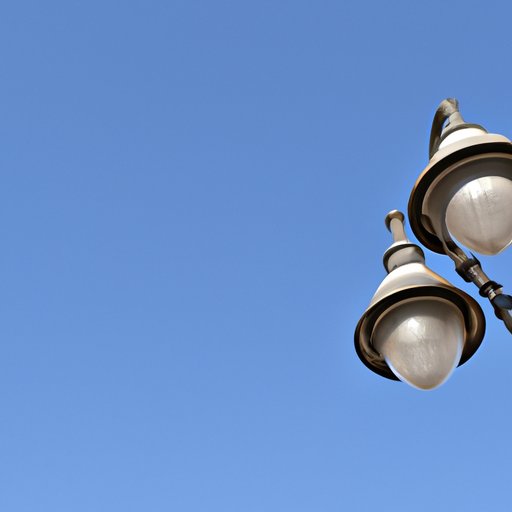Introduction
Street lights are an essential part of modern life. They provide illumination for roads, pathways, and public spaces, which helps to make our cities safer and more efficient. But when were street lights first invented? And how have they changed over the years? In this article, we take a look at the history of street lighting and explore how it has evolved.
History of Street Lighting
The first street lights appeared in the early 19th century. The London and Westminster Gas Light and Coke Company began installing gas-powered street lamps in 1807, while Paris installed its first gas streetlights in 1820. These early street lights were powered by coal gas and were extremely inefficient, with most of the light being wasted into the atmosphere.
In the late 19th century, the invention of the electric arc lamp made street lighting much more efficient. These lamps used electricity to create an intense beam of light, allowing them to be brighter and more energy-efficient than earlier gas lamps. By the end of the 19th century, electric arc lamps were being widely used in cities around the world.
The invention of the incandescent light bulb in the late 19th century also revolutionized street lighting. These bulbs were much less expensive to produce than arc lamps and could be used to create a softer, more diffuse light. This allowed cities to install more street lights, making streets safer and easier to navigate.
Types of Street Lights Today
Today, there are many different types of street lights used around the world. High-pressure sodium (HPS) lamps are one of the most common types, as they are highly energy-efficient and provide a good quality of light. LED street lights are also becoming increasingly popular, as they use even less energy than HPS lamps and can be programmed to turn on and off automatically.
Both HPS and LED street lights have their advantages and disadvantages. HPS lamps are cheaper to install, but they produce a yellowish light that can be harsh and unpleasant. LED lights can produce a better quality of light, but they are more expensive to install and require more maintenance.

People Who Invented Street Lights
The people behind the invention of street lights have had a huge impact on society. William Murdoch is credited with inventing the first gas street lights in the late 18th century. Meanwhile, Humphry Davy is credited with inventing the electric arc lamp in the early 19th century. Thomas Edison is perhaps the most famous inventor associated with street lighting, as he was the one who perfected the incandescent light bulb.
These inventors helped to make street lighting more efficient, safer, and more convenient. Without their contributions, cities would be much darker and less safe places to live.

Technological Advances in Street Lights
Modern technology has made street lights even more efficient and convenient. Smart street lights are now being used in cities around the world, which are equipped with sensors and cameras that can detect motion and adjust the brightness of the light accordingly. This allows for more efficient energy consumption and improved safety.
LED street lights are also becoming increasingly popular, as they can be programmed to turn on and off automatically, depending on the time of day or night. This helps to reduce energy consumption and can help save money on electricity bills.
Environmental Benefits of Street Lights
Street lights have had a positive impact on the environment. By using more efficient technologies such as LED lights, cities have been able to reduce their energy consumption and carbon emissions. According to a study by the US Department of Energy, switching to LED street lights could result in savings of up to 50% in energy costs.
Street lights can also help to reduce light pollution, as they can be designed to direct light downwards, rather than upwards. This helps to reduce sky glow, which can interfere with astronomical observations and disrupt ecosystems.

Economic Impact of Street Lights on Communities
Street lights have had a positive economic impact on local communities. By providing better illumination for roads and public spaces, street lights help to make cities safer and more efficient. This can attract businesses and tourists, helping to boost local economies.
Street lights can also help to improve quality of life in communities. For example, well-lit streets can provide a sense of safety and security, which can help to reduce crime rates. This can have a positive effect on property values and can help to make neighborhoods more desirable places to live.
Conclusion
Street lights have come a long way since they were first invented in the late 18th century. Thanks to technological advances, they are now more efficient, safer, and more convenient than ever before. They have also had a positive impact on the environment and local economies, making them an essential part of modern life.
(Note: Is this article not meeting your expectations? Do you have knowledge or insights to share? Unlock new opportunities and expand your reach by joining our authors team. Click Registration to join us and share your expertise with our readers.)
